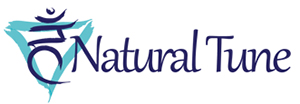
Your voice contains all 12 of the notes in the chromatic scale, plus hundreds of semi-tones (tones between the identified music notes.) When we are balanced and healthy, an analysis uses an algorythm that describes our body through just the notes we use when we talk.
Using specialized vocal analysis software, and decades of experience, we are able to detect vocal deficiencies that might indicate developing medical conditions. Since this form of sound analysis does not diagnose conditions, just points to an anomaly present, conventional medical treatment is always suggested after the results are revealed.
The test is simple. Questions are asked and conversations are charted in terms of tones detected. Music notes are the tones that are present in our words, and it is absolutely accurate to say speaking is a form of singing because our voices express so many tones in a normal conversation. The computer analysis charts those notes and reveals patterns in various parts of the body. That is all it takes to detect a person’s “sound identity.” Specific health conditions that can be suggested and improved through the use of a regular or therapeutic sound practices restoring the missing notes, or balancing the rest. And just as often, the sound balancing process heals the medical condition. We never suggest sound as the only therapeutic solution and always recommend an individual check out their results with a licensed medical professional.

Our computer-assisted detection system was developed by a medical professional who realized a need for sound detection. It uses a very sensitive specialized microphone and just a few spoken words. That is all we need to chart and identify a unique “voice print.” The voice, responding in all its nuances, gives us an accurate depiction of vocal tones that are present or missing in the body during each vocal test. Often the test is done at intervals to reflect improvement or decline.
Hundreds of thousands of these tests have been performed by certified therapeutic sound healing professionals and the results have remained the same. In all the years this software has been used, about 90% of the tests analyzed have reported accurate findings after comparing this data with known conditions or findings from traditional medical test results. In about 5% of all cases, the analysis provided absolute and accurate early warning detection for conditions that were developing, but yet unknown.

